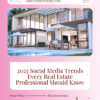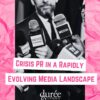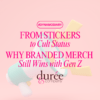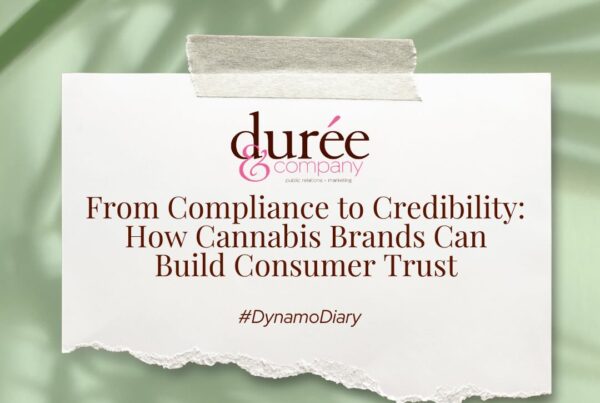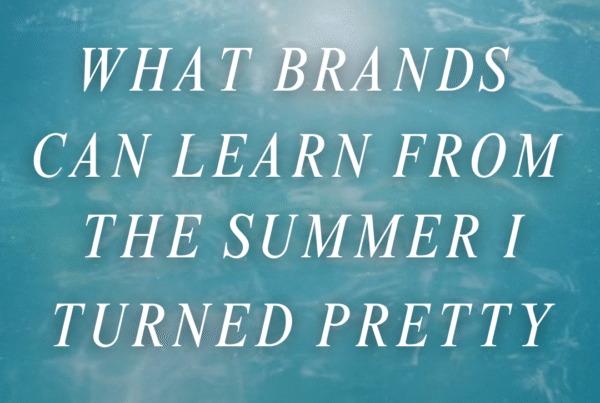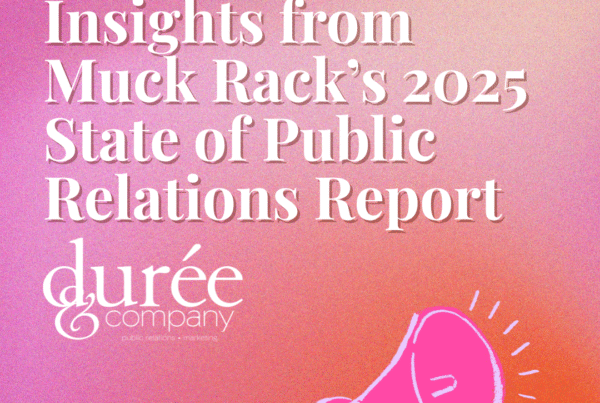
It’s easy to look at journalists and influencers unboxing packages on social media and assume they are just a lucky bunch that are always getting presents. But the reality is actually a lot more complicated than that.
I’m a freelance journalist for about a dozen online publications. Unlike many of my peers, I don’t really have a clear cut “swim lane” I write in, either. While I lean heavily toward food-related writing, that is actually part of a larger lifestyle umbrella that I also cover. Everything from cooking and travel to ecommerce roundups to home, health, nutrition, and far more.
That’s to say, I get a whole lot of mail. This is especially true during gift guide season. It’s sometimes overwhelming to get dozens of packages in a single day and go through them only to discover it is items we may or may not be able to cover, or that was sent in a way that had excess packaging, perishable ingredients past their prime, or a whole host of other potential issues that are wasting your client’s time and budget and a journalist’s time and space.
In this post, I will address a few things to consider before sending that mailing. Get your PR packages and your client the attention they deserve by adding all these factors into your mailer process.
The following are 7 tips on how to create successful journalist and influencer PR packages:
- Who is receiving this PR package?
Media is not interchangeable. A mailer that works for certain media would not work for other media. Think about a writer and what their concentration is before sending them a mailer. That means that a beauty writer is unlikely to be able to cover your new RTD canned tequila cocktail. Similarly, a wine writer may have no use for your new dash cam. Take some time to Google someone and get a feel for their current content and outlets before wasting your time and your client’s budget on sending them a mailer they may not be able to cover. It can also be really helpful to check out their Muck Rack page (which tends to have a rather real-time log of their recently published content, and every writer out there has one.) That also saves them space from their onslaught of packages to open that do contain items they can cover.
Ask yourself: Are you sending your product to someone who can even cover it? Even if I truly love a story or a product or a trend but I don’t have an assignment to write about it, that’s out of my control.
- Consider your target audience
Again, who is receiving your PR package? What do they cover? Is this the ideal person to receive what you are pitching? If you are pitching air fryers or hot sauces, you want a food writer. But if you are pitching hair serum, you want a beauty writer. By pinpointing your targets, you save yourself from wasting client budget on sending mailers to people who can’t or won’t cover it. It’s of no use to you to send products to someone who simply is not interested.
- Sending a mailer that will get you noticed
There’s a good and a bad way to stand out. We all know this!
I spoke in my Substack newsletter about a weird faux pas that had happened to me, personally, regarding a mailer. I had received a 50-pound package from a company I had never heard of, with no contact information inside. It was something I was not interested in covering, but furthermore, it was something I had no interest in receiving. I live in a 4th-floor walkup apartment with a really steep winding staircase – and it’s very small once you get up to that apartment. I have to be pretty selective about what I put into that apartment, and also what I attempt to carry up those stairs.
This isn’t the first time this has happened. In fact, similar happened a few months back when I received a similar weight of unexpected and unrequested bacon. In that case, I ended up posting to my neighborhood Facebook group that I had lots of bacon to give away and my neighbors were very pleased. However, this does not in any way help the brand. Or the content they wish to have written about their product.
It’s so important to ask first before sending something large or heavy or bulky or perishable. Ask: Will you be available to receive this? When won’t you be? Do you even WANT this? And send contact information if you do send a package…I can’t even tell these people not to do it again if I don’t know who they are. And furthermore, had I wanted to write about it? That’s pretty hard without contact information as well.
So how do you stand out in a good way? You do that by grabbing attention in a way that is cute and original and fits the theme of the concept. For example the hashtag holiday, National Soup Day is celebrated annually on February 4. One brand sent me a soup-themed mailer on that day that included the soup-related products being pitched, along with a cute bowl (That now you’ll see me using on my Instagram stories all the time!) with a spoon and a fuzzy pair of socks. All the contents of the mailer fit the theme being pitched, and also did so in a way that positively showcased. It was a creative and timely seasonal mailer that is in line with the sort of content I cover.
Always remember: It’s more important than any mailer and its components tie-in to the product and the messaging you are attempting to convey to the media.
- Communication
See above points about huge, heavy packages. Perishable packages. Packages that require a signature or someone to be available to receive. Packages with no contact information.
Please don’t leave loose ends. That’s how coverage falls through the cracks. Communicate every step of the way, as in, ensuring the recipient even wants your package, and how they may prefer to receive it. They may not have space for it. They may not have interest in it. Hell, they may not eat bacon and don’t want it in their home. If it’s perishable, make sure they want it and will be home to receive it when you are sending it. Ask first before sending ANY food, in ANY quantity. And offer modifications if applicable. Recently, I hosted a zoom for food/beverage media and everyone was sent samples of the beverage being discussed at the virtual event. All participants were given the choice of a full-sized package (a case of each flavor of the beverage) or a smaller package (just a few cans of each flavor). People got to choose what was a fit for their own circumstances. But when in doubt, err on the side of small, light, and convenient.
Very often, we receive packages that do not include any information about who sent it and why. A PR package should include a press kit or a quick note with contact information, even a business card, is imperative so we know what is being sent to us, and why. This is also how we can follow up with you if we need further information or images. It’s also how we can give you feedback, say, on why we are not a fit for this product in the first place.
- Timing
Timing is everything, both in pitching and in mailers related to pitching. You may have an excellent pitch for Valentine’s Day, but if it arrives ON Valentine’s Day, it’s useless. Our content was written weeks ago.
The same goes for mailings related to upcoming holidays. If you want your red wine to be considered for National Red Wine Day, don’t send the mailer two days before the day. You’ll want to send it weeks before, as that’s when we’ll be trying and evaluating wine to include in any coverage we’re considering.
If the mailer is tied to a trip or an event or a launch or even a season (say, the holiday season, which is the biggest mailing time of the year), time that accordingly as well.
- Packaging
It’s long been said that many of us judge a book by its cover. The same can be said for mailings. What is inside PR packages matters, as does how it is packed. But give consideration to the outside as well.
You want mailers that are sleek, lightweight, compact. Avoid a whole lot of excess materials and packaging. We care about the world and the environment and no one wants to receive something that is exhibiting a whole lot of environmentally harmful waste.
Try not to be tone deaf. If you are pitching me your new clean shampoo, it would be kind of ridiculous to not pack it in eco-friendly materials. Please also be sure to be cognizant of fragile or liquid contents. We’ve been doing a whole lot of virtual wine tastings and cocktail classes this year on the F&B side of things and we’ve all dealt with packages that arrive with opened bottles and shattered glass. This is dangerous and messy and also a waste of budget. Make sure to mark fragile products and wrap them well. And avoid tons of excess packing materials. Constantly, I end up having to sweep up confetti, packing peanuts, and crinkled up paper that has ended up all over the floor from box-opening day. This is annoying and messy for me but it’s also not environmentally friendly. There’s always a better way! Try whenever possible to pack packages in a biodegradable, environmentally friendly, and safety-first way.
- Keep things personal!
We should get personal with mailers. I love when I receive PR packages that are fun and unique and personalized to me and my interests.
I recently was sent M&Ms with my face on it, and a calendar with my pups’ faces. That sort of effort isn’t always in budget or possible, but it’s SO appreciated when it happens.
A helpful way of looking at things is to consider media mailers as a modern variation of the deskside. But making these mailers the best they can be, isn’t only an effective use of your time and ours, but the best way of getting your client and their brand seen in a positive light. And that leads to more coverage opportunities for you! We all win. Especially my aching, tired, Generation X back…because I can’t handle any more of those packages that are the size of a small child!
Want to know more about the ins and outs of promoting your brand? Learn more about how to incorporate media shipments into your public relations strategy here or contact the Durée & Company team to get started!
This post is part of Durée & Company’s ongoing Guest Blog series, The #DynamoDigest, where we have tapped select journalists and influencers whose work we admire and respect. In this series, top tips and best practices are shared across a variety of topics impacting the public relations industry today.
By Aly Walansky, contributor to Today.com, Forbes.com, Food & Wine, Business Insider, Food Network, Bravo, Reader’s Digest, Men’s Health, Men’s Journal, Goalcast, YourTango, POPSUGAR, Spy.com and more.
About Durée & Company
Durée & Company, Inc. is an award-winning, full-service public relations, marketing and special events firm founded in 1999. The firm has offices in Fort Lauderdale, Florida, and Aspen, Colorado. Durée & Company serves the corporate, agency and nonprofit practice areas for local, national, and international clients. Services include public relations, social media, marketing, content development, advertising, special events, branding, radio promotions and more. Durée & Company clients include well-known names in business, fashion, hospitality, travel, health and wellness, cannabis and hemp, psychedelics, technology and cryptocurrency, marine and yacht, art and culture, nonprofit organizations, legal and professional services and real estate. Durée & Company is a member of PR Boutiques International™ (PRBI), an international network of boutique PR firms. To learn more, call 954-723-9350; go to dureeandcompany.com; cannabismarketingpr.com; or psychedelicpr.com. Join the social conversation and follow Durée & Company on Facebook, Instagram, Twitter, YouTube and LinkedIn at @DureeCoPR.

